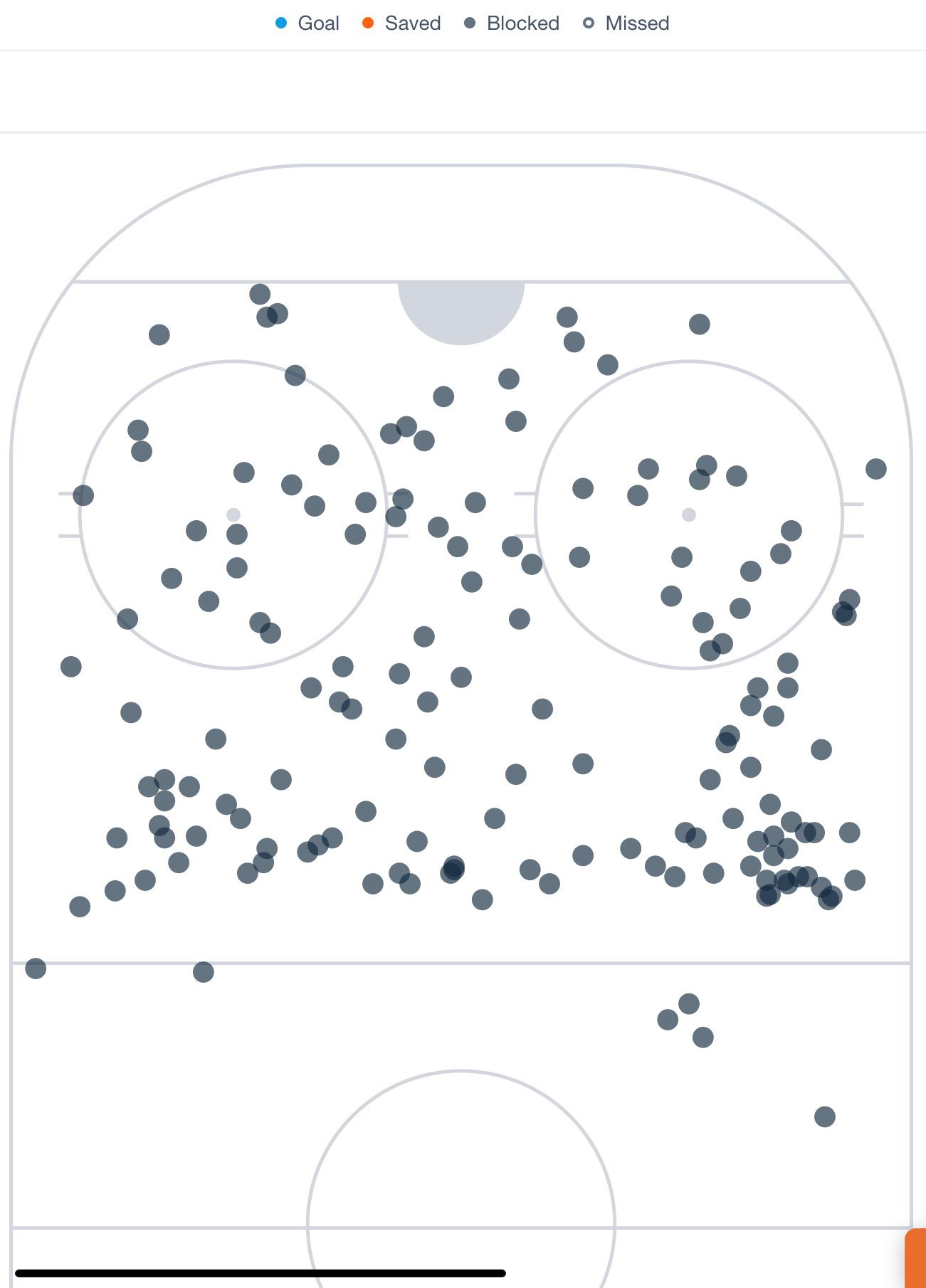Greg checking in to continue on with part two of our mini-series on shot quality vs. shot quantity. We are looking at why point shots are a bad tactic/strategy.
Part 1 - Shot Quality vs Shot Quantity - recommended reading so you understand the terms and references made below.
Part 2 - Point shots suck
The “point'“ is the area just inside the offensive zone blue line where defensemen on the offensive team are normally positioned. It’s a spot far away from the goalie, but still inside of the offensive zone.
Low Shooting percentage
The first reason why point shots suck is that they don’t score very often.
Point shot with traffic score about 3% of the time
Point shot without traffic score about 1% or less of the time. Basically, it’s “playing catch” with the goalie
It’s clear that point shots aren’t great options for scoring goals. However, some argue that they create rebounds for forwards to whack home for a goal, tips, screens, etc.
Getting pucks to the net
“We gotta get pucks to the net” - Just about every hockey player or coach being interviewed between periods.
The hockey slang translation - “we want to shoot for anywhere possible while our teammates are crashing/converging/swarming the net looking for dirty (deflections, rebounds, etc.) goals. That is our plan to score more”
This is a less-than-ideal strategy. In Part 1, we established that shooting from the outside wasn’t a viable, consistent strategy for creating offense.
If those extra shots are mostly coming from low percentage areas, then why are they shooting from there?
Simply put: to create rebounds.
Creating Rebounds
One of the largest errors in judgment is thinking that point shots create rebounds. They don’t.
This chart from the great Alex Novet is great for several reasons:
Showing that point shots actually create fewer rebounds than anywhere else
Understanding the opponent actually recovers the majority (about 60%) of the rebounds.
Rebounds are better created from lower in the zone. A shot from the corner shot is preferred over a shot from the point.
Any time a shot is taken there is less than a 50% chance of getting the puck back.
Takeaways:
Point shots create rebounds at lower clips than everywhere else on the ice
Rebounds recovered by the offense around about 40%, despite where the shot that created the rebound started from
You can find Alex’s full CBJHAC rebound presentation here.
Where rebounds actually come from
During the 2017-18 NHL season, Hiroki’s Analytics did a bunch of studies on goal scoring. One of their focus areas was rebounds.
He’s not the only one noticing these trends. Shawn Ferris, a leading analytic writer came to the same conclusion as well.
Just like goals, rebounds are also created from within the house. Again, point shots are not the solution. Working to get higher-quality shots is the solution.
Greater shot quality > great shot quantity
Stats from an Ohio high school team
Taking these numbers and stats into the real world, we can study a typical Ohio high school hockey team from the 2019-2020 season. Here are their shot charts:
All shots by location - Clusters formed surrounding the net and at the points.
Shots that were blocked - Large clusters are at the points as point shots are blocked at a higher rate than elsewhere.
Saved shots - No surprises here. Point shots get saved often at 97%-100%.
And finally… the goals. Funny how all the clusters at the points went away. All the goals are at the net. As a Russian coach once told me, “Go to net, score goal.”
What we learned
Defensemen should utilize point shots only as a last resort.
Simply put, there are better options that lead to more dangerous chances. Standing at the point and taking a shot is a terrible strategy for creating goals and sustaining offense.
Further reading
Looking at more effective routes in the offensive zone that lead to more and better puck touches
Another pet peeve… sliding defensemen. Why we need to stop the slide
Did You Enjoy This Newsletter?
Help us spread the ideas within and share it with the people you care about










